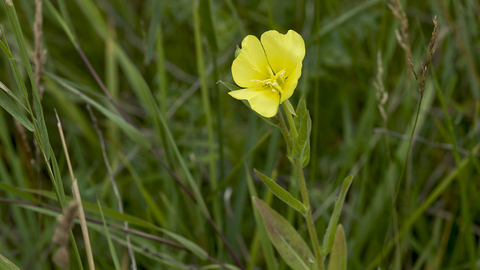
©Northeast Wildlife
Common evening-primrose
Enw gwyddonol: Oenothera biennis
An introduced species, Common evening-primrose is now naturalised on waste ground, roadside verges and railway cuttings. It has long been used to produce the herbal remedy, evening-primrose oil.
Species information
Ystadegau
Height: up to 1.5mStatws cadwraethol
Introduced, but naturalised species.
